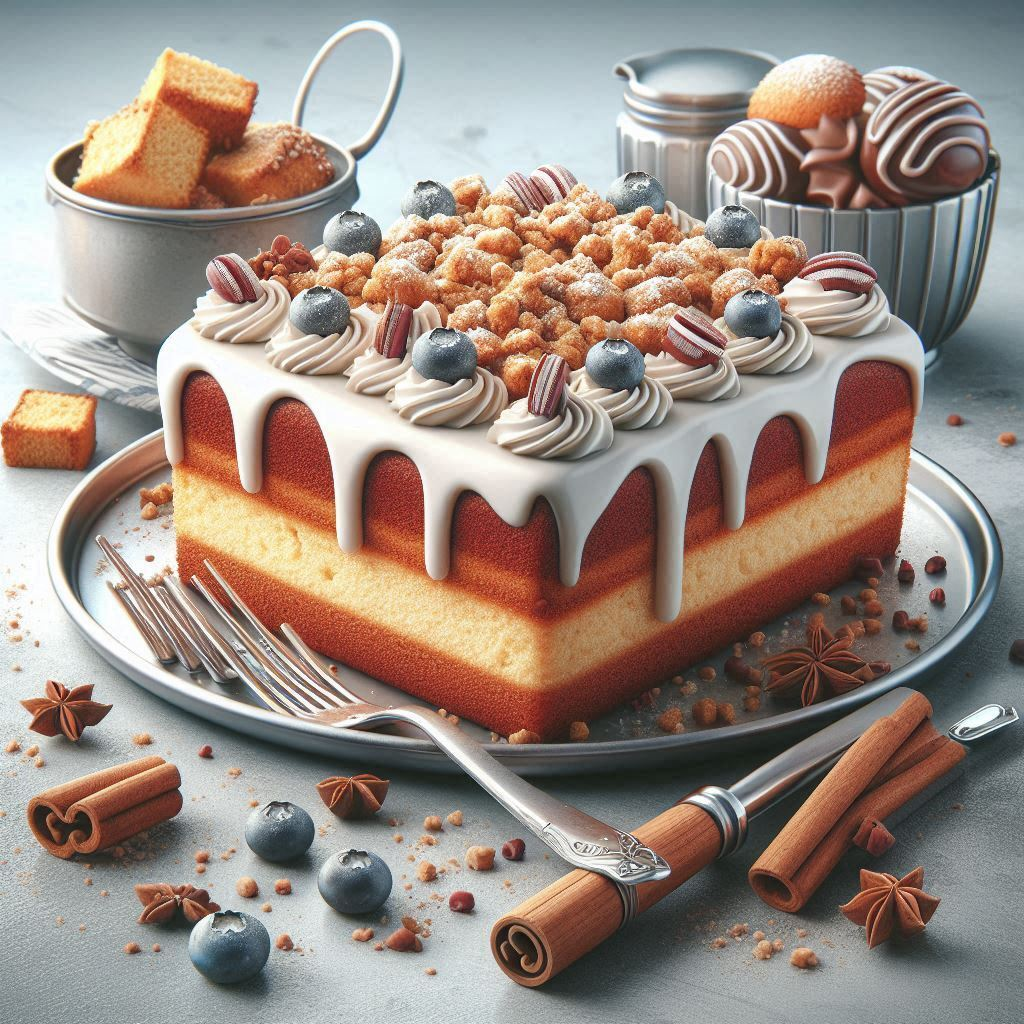
A Crumbly Journey: Exploring the History and Preparation of Crumb Cake
Crumb cake, a delightful dessert with its irresistible crumb topping, boasts a rich history and a surprisingly simple preparation. Let’s embark on a culinary journey to uncover its origins and learn the secrets to baking a perfect crumb cake.
Origins of a Crumbly Classic:
While the exact origins of crumb cake remain shrouded in culinary mystery, its roots can be traced back to 19th-century Germany. It is believed to have evolved from a traditional German cake called “Streuselkuchen,” which translates to “sprinkle cake.” This cake featured a simple dough base topped with a generous sprinkle of streusel, a mixture of butter, flour, and sugar.
As German immigrants brought their culinary traditions to America, Streuselkuchen evolved into the crumb cake we know and love today. The American version often incorporates a richer crumb topping, often with the addition of cinnamon and nuts. This evolution reflects the American penchant for sweet and indulgent desserts.
The Art of Crumb Cake Baking:
The beauty of crumb cake lies in its simplicity. The recipe, though seemingly straightforward, offers a canvas for culinary creativity. Here’s a breakdown of the key elements:
- The Cake: A basic butter cake serves as the foundation. It’s typically made with flour, sugar, eggs, butter, and milk. The cake batter can be flavored with vanilla, lemon, or even spices like nutmeg or cinnamon.
- The Crumb Topping: This is where the magic happens! The crumb topping is a mixture of flour, butter, sugar, and often spices like cinnamon. The texture of the crumb topping can range from coarse and chunky to fine and delicate, depending on the amount of butter and the fineness of the flour.
- The Baking Process: The cake batter is poured into a baking pan, and the crumb topping is generously sprinkled over the top. The cake is then baked until golden brown and the crumb topping is crisp and slightly caramelized.
Tips for Crumb Cake Perfection:
- Cold Butter is Key: Using cold butter in the crumb topping ensures a crumbly texture. Grate the butter for even distribution.
- Don’t Overmix: Overmixing the cake batter can result in a tough cake. Mix just until the ingredients are combined.
- Don’t Overbake: Keep a close eye on the cake while it bakes. Overbaking can lead to a dry cake.
- Let it Cool: Allow the cake to cool completely before frosting or serving. This will allow the crumb topping to set and prevent it from becoming soggy.
Variations and Inspiration:
The beauty of crumb cake lies in its versatility. Here are some ideas to inspire your culinary creativity:
- Flavor Variations: Experiment with different flavors in the cake batter and crumb topping. Try adding citrus zest, chocolate chips, or even a touch of coffee.
- Fruit Fillings: Layer fresh or frozen fruit, such as berries or peaches, between the cake batter and the crumb topping.
- Glazes and Frostings: Enhance the flavor and presentation with a simple glaze or a creamy frosting.
A Crumbly Conclusion:
Crumb cake, with its simple ingredients and endless possibilities, is a testament to the enduring appeal of classic desserts. Whether you’re a seasoned baker or a novice in the kitchen, the joy of creating a crumb cake is a rewarding experience. So, gather your ingredients, preheat your oven, and embark on your own crumbly journey!



